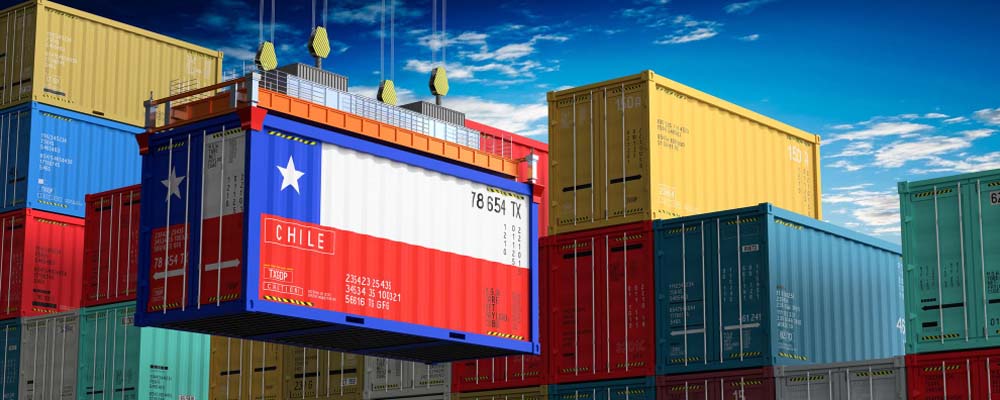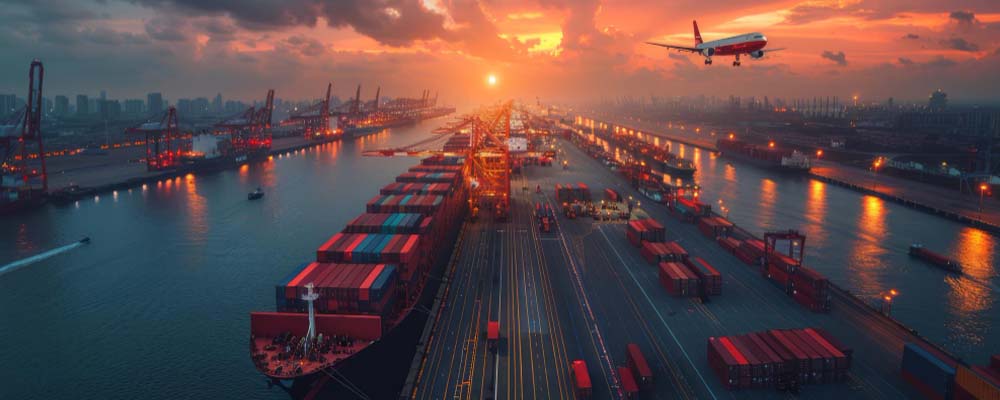
In the complex world of international logistics, shipping containers to Chile can seem daunting. Whether you’re a freight forwarding company, a logistics provider, or an e-commerce business, understanding the nuances of this process is crucial. This guide offers a comprehensive look at how to ship containers to Chile, providing valuable insights into costs, transit times, main ports, and more.
What Are the Ways to Ship to Chile?
When it comes to shipping containers to Chile, understanding the available methods is essential. Different options suit varying needs, and knowing them can help you choose the most efficient and cost-effective route.
Ocean Freight
Ocean freight is the most common method for shipping containers to Chile. It’s suitable for large shipments, offering a balance of cost and efficiency. Full Container Load (FCL) and Less than Container Load (LCL) options cater to different shipment sizes. FCL is ideal for larger loads, while LCL allows multiple shippers to share container space, reducing costs.
Air Freight
For time-sensitive shipments, air freight is the best option. While more expensive than ocean freight, it significantly reduces transit times. This method is perfect for high-value or perishable goods that need to reach their destination quickly.
Multimodal Transportation
Combining different transportation methods, multimodal transportation offers flexibility and efficiency. By integrating ocean, air, and land transport, this approach ensures seamless shipping and can be tailored to specific logistical requirements.
 What Are the Costs to Ship a Container to Chile?
What Are the Costs to Ship a Container to Chile?
Understanding the costs involved in shipping a container to Chile is fundamental for budgeting and planning. Several factors influence the overall expenses, and being aware of them helps in making informed decisions.
Freight Rates
Freight rates vary based on the shipping method, container size, and weight. Ocean freight is generally more cost-effective for large shipments, while air freight commands higher rates due to speed and convenience.
Additional Fees
Additional fees such as terminal handling charges, documentation fees, and customs duties can add to the overall cost. It’s essential to factor these into your budget to avoid unexpected expenses.
Insurance
Shipping insurance is crucial to protect against potential losses or damages. The cost of insurance depends on the value of the goods and the level of coverage required. Including this in your budget ensures peace of mind.
What is the Transit Time When Shipping to Chile?
Transit time is a critical consideration when shipping containers to Chile. It affects planning, scheduling, and customer satisfaction. Knowing the approximate time frames helps in setting realistic expectations.
Ocean Freight Transit Time
Ocean freight transit time to Chile varies depending on the origin and route. On average, it takes around 20 to 40 days for a container to reach Chilean ports from major global hubs.
Air Freight Transit Time
Air freight significantly reduces transit time, with shipments typically reaching Chile within 3 to 7 days. This method is ideal for urgent deliveries but comes at a higher cost.
Factors Affecting Transit Time
Several factors, including weather conditions, port congestion, and customs clearance processes, can impact transit time. Being aware of these potential delays helps in better planning and communication with stakeholders.
 Main Ports in Chile
Main Ports in Chile
Chile’s strategic location along the Pacific coast makes its ports vital for international trade. Familiarity with the main ports enhances logistical planning and efficiency.
Port of Valparaíso
Valparaíso is one of Chile’s busiest ports, known for its modern facilities and efficient operations. It handles a significant portion of the country’s container traffic, making it a preferred choice for many shippers.
Port of San Antonio
San Antonio is another major port, often competing with Valparaíso in terms of container volume. Its proximity to Santiago, Chile’s capital, adds to its strategic importance.
Port of Arica
Located in northern Chile, Arica serves as a crucial gateway for trade with neighboring countries like Bolivia and Peru. Its strategic position makes it an essential hub for regional trade.
How Do I Find a Freight Forwarder in Chile?
Finding a reliable freight forwarder in Chile is crucial for smooth shipping operations. A reputable forwarder ensures that your containers reach their destination efficiently and without complications.
Research and Referrals
Begin by conducting online research and obtaining referrals from industry colleagues. Look for freight forwarders with a proven track record and positive reviews. Networking within industry forums and associations can also provide valuable recommendations.
Verify Credentials
Verify that the freight forwarder holds proper licensing and accreditation from the appropriate authorities. Verifying credentials and certifications offers assurance of their professionalism and reliability.
Evaluate Services
Different forwarders offer varying services. Evaluate their offerings, including customs clearance, warehousing, and transportation. Choose a forwarder that aligns with your specific needs and provides comprehensive support.
FAQs about Shipping Your Container to Chile
What Documents Are Required?
Shipping to Chile involves several documents, including a commercial invoice, bill of lading, and packing list. Ensuring accurate and complete documentation helps in smooth customs clearance.
Are There Any Restrictions?
Certain goods may be subject to restrictions or require special permits when shipping to Chile. Familiarize yourself with the regulations to avoid potential delays or penalties.
How Can I Track My Shipment?
Most freight forwarders offer tracking services, allowing you to monitor your shipment’s progress. Utilize these tools to stay informed and address any issues promptly.
 Conclusion
Conclusion
Shipping containers to Chile involves a multifaceted process that requires careful planning and execution. From understanding the shipping methods and costs to navigating the main ports and finding reliable freight forwarders, each step is crucial for success.
By following this comprehensive guide, you can streamline your shipping operations and ensure that your containers reach their destination efficiently and cost-effectively. For more personalized assistance and to explore further resources, consider reaching out to us who can provide tailored support.
Shipping to Chile doesn’t have to be a daunting task. With the right knowledge and resources, you can master the process and achieve seamless logistics for your business.




 What Are the Costs to Ship a Container to Chile?
What Are the Costs to Ship a Container to Chile? Main Ports in Chile
Main Ports in Chile Conclusion
Conclusion



